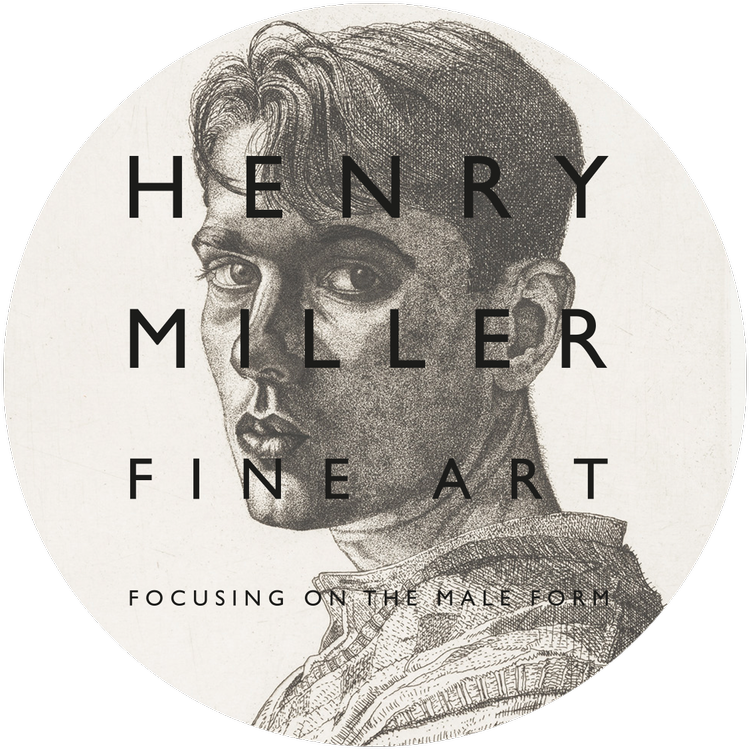With all exhibitions and art fairs in London (and worldwide) now cancelled for the foreseeable future, access to art is understandably limited. As it is not possible for you to come to me, I have decided to come to you and present a series of short pieces highlighting selected pictures from my collection. This is the sixth in the series.
I hope that by providing extended information about certain works, you can become acquainted with artists you may not know, or if you are already familiar with them, develop a further understanding of particular works. In the very least, it will hopefully distract you from the news for 5 mins!
(N.B. If you are reading this in your email feed, the piece reads better on my website. Just click the title and it will take you to my blog.)
Hommage á Constantin Cavafy, 1986.
Yves Paradis is a French photographer whose work was almost synonymous with gay imagery throughout the 1980’s, appearing regularly on the pages of Europe’s most popular gay magazines. His soft and tender black and white photographs captured a kind of romanticised vision of gay life, away from the reality and excitements of the scene, making them as timeless as they are very much of their time.
Born in Brittany in 1955, Paradis grew up in rural France where, at the age of thirteen, one of his teachers introduced him to photography, which, for someone who struggled with writing, became a life line. His father, a farmer, quickly realised how important it was for him and set up a studio and dark room in their attic so he could experiment and develop his own pictures.
Sur la Route Delphes, 1984.
Little did he know that it would give his son the opportunity to explore his burgeoning homosexuality, taking naked photographs of himself and his then boyfriend. As a gay teenage boy in the late 1960’s Paradis soon realised that photography was going to be the only way for him to approach – and interest – the boys he fancied at school. He once said that he started taking photographs to recapture time and possess the images of boys that were already disturbing him.
—————————————-
Images below: Le Dormeur du Val, 1993; What do I see?, 1984.
While his first photographs were of handsome friends on holiday and army mates during national service, he spent the 1970’s working as a journalist and focusing on reportage style photography. And despite still experimenting with homo-erotic compositions during that time, he still thought of art photography as a hobby rather than a career.
As a young and engaged gay activist, he welcomed the arrival of Gai Pied, France’s first mainstream gay magazine, in 1979. He soon sent them a series of photographs he took of two soldiers kissing on an army tank, which they loved and published as part of a big spread. From that moment on, Paradis worked regularly with them as well as other European gay publications for over a decade, creating some of the most iconic images of the gay 1980’s.
—————————————
Images below: Sur le Pont des Arts à Paris, 1986; Le Jeune Homme aux Pied Nus, 1986.
In contrast with a lot of fantasy and fetishist gay photography of the time though, his pictures usually featured young men of the ‘boy-next-door’ and ‘bit-of-rough’ types, definitely sexy but not physically perfect, making them more realistic as well as more romantic.
Paradis did not embrace the gay scene of bars and clubs and while he sometimes found willing models via ads in the gay press, he used to meet most of them randomly on the streets of Paris. Many were straight boys – or so they told him – but he still managed to convince them, not always easily, to get naked for him in front of the camera.
———————————
Images below: Le Garçon qui Attend, 1992; Nus dans la Grenier, 1985.
In 1991, Aubrey Walter published ‘Joie de Vivre’, a collection of his photographs, now sadly out of print, introducing Paradis’ work to a British audience. And while he retired from photography soon after the book’s publication, his work is being re-discovered by a new generation of millennials, potentially craving a sense of innocence and nostalgia currently missing from their overly self conscious and insta-friendly world.
Henry Miller Fine Art has a selection of Yves Paradis available for sale. For details, contact Henry Miller and click the link HERE






